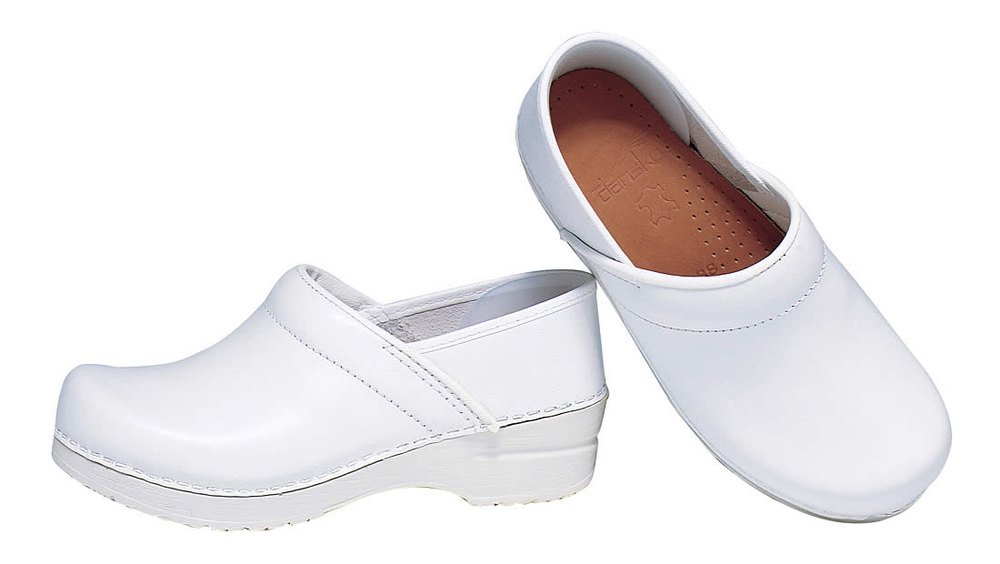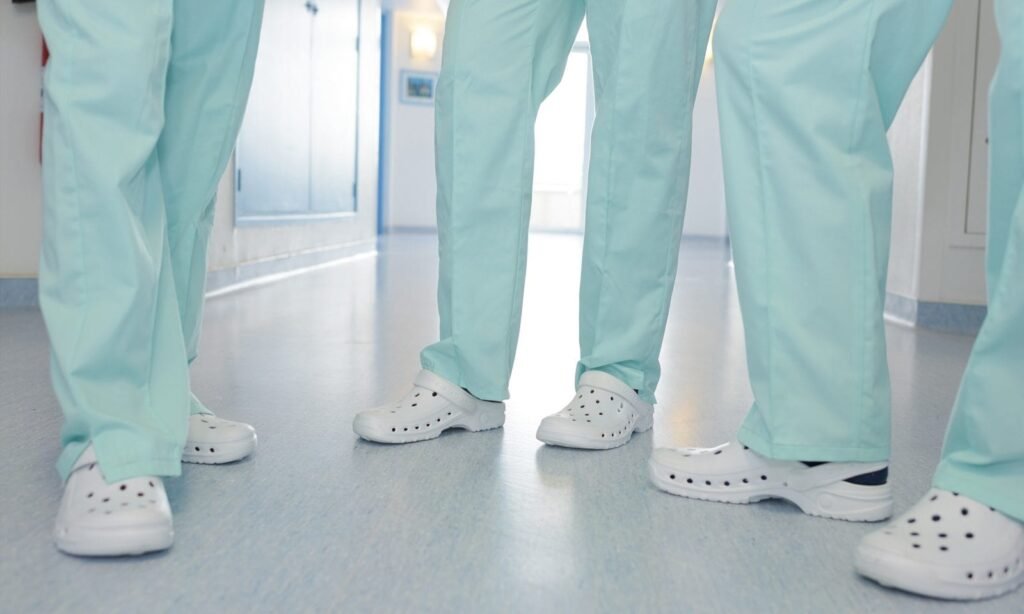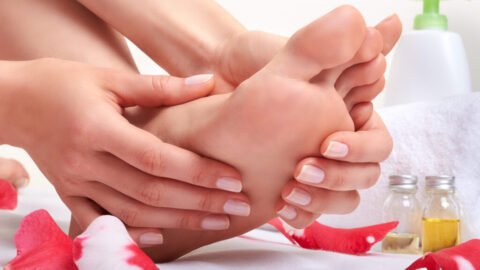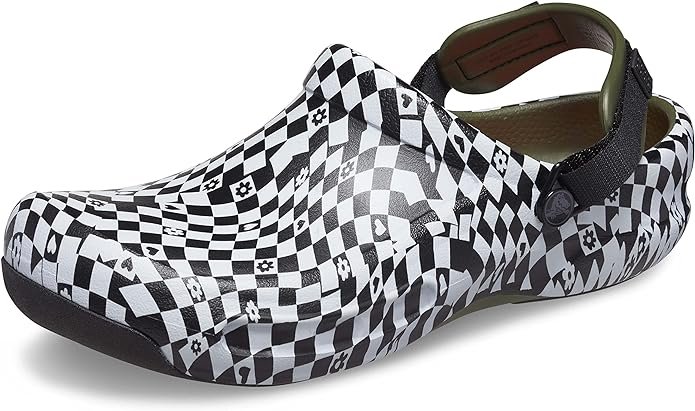Nurses spend countless hours on their feet, making the choice of footwear a crucial decision for comfort, support, and durability throughout long shifts. Sneakers, clogs, and slip-ons each offer distinct advantages, leading to a varied preference among nursing professionals. Sneakers often provide excellent support and cushioning, which are essential for maintaining foot health and managing fatigue. On the other hand, clogs are favored by many for their ease of slipping on and off, as well as offering a stable platform that can be beneficial for posture and alignment.
While sneakers and clogs are common go-tos, slip-on shoes present a blend of convenience with the added benefit of no laces, which ensures that nurses can easily transition from one task to another without interruption. Each type of footwear has a unique set of features that cater to the demands of nursing. The right choice can prevent common foot problems like plantar fasciitis and can even have an impact on overall body pain experienced after a long day of work.
Therefore, a comparative review is imperative for nurses to understand the nuances between these styles. From the tread pattern and slip resistance to the comfort and breathability offered by various materials, every element must be carefully weighed. This review aims to mirror the attention to detail that nurses give to their patients, providing them with the knowledge to select shoes that best meet their professional and personal requirements.
Essential Criteria for Nursing Footwear
Selecting the proper footwear is crucial for nurses due to the demands of their job, which involve long hours of standing and walking. The following criteria are key when choosing the best shoes for this challenging profession.
Comfort and Fit
The foremost priority for nurses is footwear that offers exceptional comfort and a snug fit. Shoes should have a comfortable insole and ample toe room to prevent foot cramps and blisters. The Clove Nursing Shoes are recognized for their conforming fit, specifically designed for the nursing profession.
Support and Stability
Shoes for nurses must provide adequate arch support and heel cushioning to mitigate the strain of constant movement. Proper support translates into greater stability and reduces the risk of injuries. Look toward options like the On Cloud 5 shoes, which are praised for their stability and support, essential for those with plantar fasciitis.
Durability and Material Quality
Durability is a non-negotiable feature as nurses need shoes that withstand the test of time without sacrificing comfort. Shoes should be made of high-quality, easy-to-clean materials such as leather or synthetic mesh. For example, the Figs | New Balance 996 is a collaboration offering durable materials suitable for the rigorous demands of nursing work.
Sneakers for Nurses
Sneakers offer a blend of comfort and support that is valuable in the fast-paced, physically demanding nursing environment. They provide much-needed cushioning and traction that can help nurses manage their long shifts.
Pros of Sneakers
- Durability: Sneakers are generally designed to withstand the rigors of continuous use, making them ideal for the long hours and quick-paced work of nursing.
- Support: Many sneakers come with extensive cushioning and support for the arch and heel, which is essential for nurses who are on their feet all day.
Cons of Sneakers
- Breathability Issues: Some sneakers may not provide adequate breathability, leading to discomfort during long periods of wear.
- Weight: Sneakers can be heavier than other types of nurse footwear, which may contribute to fatigue over a long shift.
Best Sneaker Brands for Nurses
- Clove Shoes are often recommended for their comfort and easy-to-clean material, tailored for healthcare professionals.
- Nike designs like the Motiva are created for low-intensity movements and feature plush cushioning ideal for long nursing shifts.
- ASICS offers gel technology for exceptional comfort and support important for the busy workday of a nurse.
Clogs for Nurses

Nurses often choose clogs for their workplace footwear due to the balance between comfort and functionality that they provide. This section explores the benefits and drawbacks of clogs, in addition to highlighting some recommended brands specifically suitable for nurses.
Advantages of Clogs
Comfort: Nurses work long shifts, and clogs offer considerable arch support and a roomy toe box which can help in reducing foot fatigue. Durability: Made from sturdy materials, clogs for nurses are designed to withstand the demands of a hospital environment. Ease of Cleaning: With a simple wipe down, clogs can be sanitized, which is essential in a medical setting. Slip Resistance: Many clogs feature slip-resistant soles, crucial for navigating the spills and slick floors often encountered in healthcare facilities.
Disadvantages of Clogs
Less Stability: The loose fit may lead to reduced ankle stability, increasing the risk of slips or falls. Heavier Weight: Compared to other types of nurse shoes, clogs tend to be heavier which may contribute to leg fatigue.
Recommended Clog Brands
- Clove: Marketed specifically to healthcare professionals, Clove Nursing Shoes offer fluid resistance and ample support for those on their feet all day.
- Dansko: Known for their durable construction and support, Dansko’s clogs are a popular choice among nurses for both men and women.
Slip-ons for Nurses
Slip-on shoes for nurses combine convenience with comfort, making them a popular choice for healthcare professionals who are constantly on their feet and often have little time to deal with laces or buckles.
Benefits of Slip-ons
- Ease of Use: Nurses can quickly put on or take off slip-on shoes, which is ideal in busy healthcare settings.
- Comfort: Many slip-on models offer ample cushioning and support, essential for long shifts.
Drawbacks of Slip-ons
- Less Customizable Fit: Slip-ons typically have less adjustable fastenings, which can affect the snugness of the fit.
- Potential for Slippage: Depending on the design, slip-ons may not provide the same level of heel security as laced shoes or clogs, which can lead to slippage.
Top Slip-on Styles for Healthcare
- Clove Classic Nursing Shoe: Designed specifically for healthcare workers, these shoes are known for their comfort and ease of cleaning. They are highlighted on Verywell Health as a top choice for nurses.
- Crocs On-The-Clock Work Slip-On: An affordable and pragmatic option with a slip-resistant tread and easy-to-clean design, as recommended by Prevention.
Comparison of Footwear Types

Selecting the right footwear is vital for nurses, as their choice can impact foot health, comfort during long shifts, and the ease of care for the shoes. Let’s consider the ergonomics, price, and hygiene factors of sneakers, clogs, and slip-ons.
Ergonomics and Design Comparison
Sneakers are often favored for their cushioning and support. For instance, models like the Asics Gel-Nimbus 25 provide substantial arch support and may help in reducing the risk of foot conditions. Clogs, such as the Dansko Kane Clog, offer a different form of ergonomic benefit with a design that allows for easy slipping on and off, which some nurses may prefer for convenience between shifts. Slip-ons combine elements of both, like the Clove Classic Nursing Shoe, which provides ease of wear with considerable support.
Price and Value Evaluation
When evaluating cost, it’s essential to consider longevity and durability in addition to the initial price tag. Sneakers like the budget-friendly New Balance FuelCore Nergize V1 Sneaker offer competitive pricing without sacrificing quality. In contrast, clogs have a higher entry price point but can be a valuable long-term investment due to their durability. Slip-ons range widely in price; options like the Clove Classic Nursing Shoe are priced higher, reflecting a balance of ergonomic design with a focus on special features for nursing professionals.
Hygiene and Maintenance
For nurses, the ability to maintain a clean and hygienic environment is non-negotiable. Clogs are often made from materials that resist liquids and are easy to clean. Sneakers may require more frequent maintenance due to their fabric materials, but some are designed with a focus on being washable. Slip-on shoes fall in the middle, with products like Clove Classic Nursing Shoe specifically catering to the healthcare setting with fluid resistance and easy-wipe materials. Each type offers distinct advantages depending on a nurse’s priorities in hygiene and ease of care.
User Reviews and Feedback

In this section, detailed insights from various nursing professionals regarding their experiences with sneakers, clogs, and slip-ons are explored, shedding light on comfort, durability, and design preferences among these footwear types.
Sneaker User Opinions
Nurses often cite the superior cushioning and support provided by sneakers. Many have expressed appreciation for Adidas Cloudfoam Pure 2.0 Shoes, emphasizing their balance between light weight and cushioned comfort. Additionally, sneakers like the New Balance 608 V5 Casual Comfort Cross Trainer are recognized for accommodating wide feet well, a crucial element for those with broader foot shapes.
Clog Wearer Testimonials
Clogs stand out for their easy slip-on design and robust structure, offering quick changes and a stable platform. Healthcare professionals have highlighted designs like the Bala Twelves as being fluid-resistant and stylish, effectively meeting the demands of a fast-paced hospital environment while still offering a degree of personal expression.
Slip-on Experience Reports
The convenience of slip-ons is often praised, with many nurses valuing the ease with which they can be put on and removed. The Vessi Cityscape Shoes, for instance, receive acclaim for their waterproof qualities and comfort during long shifts, showing that practicality does not have to sacrifice comfort or style. Slip-ons are particularly popular among nurses looking for a blend of functionality and time-saving features.
Safety and Traction Analysis
In the demanding healthcare environment, nurses require footwear that provides optimal safety and traction to reduce the risk of workplace injuries. This section breaks down the effectiveness of sneakers, clogs, and slip-ons in terms of their grip and safety features.
Sneaker Traction Testing
Sneakers are typically designed for maximum support and traction. A study on traction performance across the life of slip-resistant footwear indicates that sneakers with structured tread patterns can improve stability on various surfaces. The patterns are engineered to channel fluids away from the sole, reducing the likelihood of slippage.
Clog Safety Features
Clogs offer a different safety profile, often preferred for their convenient slip-on design and sturdy construction. The closed-toe configuration protects against accidental spills and dropped objects. While they may have a smoother sole compared to sneakers, many clogs incorporate anti-slip materials to enhance their grip on slick hospital floors.
Slip-on Grip Evaluation
Slip-on shoes are prized for their comfort and convenience, but their traction capabilities vary widely. Products like the Clove Classic Nursing Shoe are specifically marketed to healthcare professionals and have outsoles designed for adequate grip on diverse floor conditions, ensuring they meet safety standards for fast-paced medical settings.
Longevity and Lifecycle
The longevity and durability of footwear are paramount for nurses who rely on their shoes to withstand long hours of wear during demanding shifts. Different types of shoes offer varied lifespans and resilience to wear and tear.
Sneaker Durability Over Time
Sneakers are designed for comfort and sustained use, which is essential for the long hours nurses work. Most sneakers typically offer a lifespan of several months to a year of regular use, depending on the material and construction quality. For instance, sneakers with reinforced toe areas and high-density foam can better resist the daily wear nurses may encounter. The Life Cycle of Shoes explains that the end of a sneaker’s usability can be identified when substantial wear, such as holes or flattened soles, becomes evident.
Clog Longevity Assessment
Clogs are favored for their ease of use and sturdy build, often synonymous with longevity. The robust design found in many nursing clogs often includes thick soles and durable leather, extending the footwear’s useful life. However, even the most durable clogs will eventually succumb to regular wear, making routine assessment for compromised support or structure critical. Nurses can often get several years of use out of a high-quality pair of clogs if maintained well, as they are made to handle the rigors of hospital floors and fast-paced work environments.
Slip-on Wear and Tear
Slip-on shoes provide nurses with the convenience of quick fitting without sacrificing the necessary support for extended wear times. The simplicity in their design often translates to fewer seams and potential fail points, contributing to a fair lifespan. However, as slip-ons are typically less robust than clogs or lace-up sneakers, they may show signs of wear such as upper material stretching or sole wear more quickly. Regular inspection for the loss of elasticity and cushioning is important, as such degradation can affect the foot health and posture of a nurse.
Aesthetics and Style Considerations

When selecting footwear, nurses weigh functionality alongside fashion. Aesthetic appeal plays a significant role in personal expression even in clinical settings.
Sneaker Fashion Trends
Sneakers have come a long way in terms of style, blending retro and modern elements to satisfy diverse preferences. For example, the FIGS New Balance 327 Sneakers not only meet practical criteria but also embrace a vintage-inspired design that appeals to fashion-forward healthcare workers.
Clog Style Choices
Clogs are a staple for nurses, offering a variety of designs that range from traditional to contemporary. They provide an opportunity to stand out with options like the J.Crew Slip-on Studded Platform Clogs, which add a chic twist to the conventional clog silhouette while maintaining comfort.
Slip-on Design Variety
Slip-ons are valued for their convenience and have an array of design options to suit any style. Often chosen for their ease of wear, they can sport sleek leather finishes or include ergonomic features that cater to the physical demands of nursing while also offering stylistic versatility.
The Verdict
In evaluating the best options for nurses, one must consider factors such as support, comfort, and the specific design features that cater to the demanding hospital environment.
Overall Footwear Recommendations
Sneakers are often recommended for nurses due to their breathability and flexibility. Studies have shown that they can effectively support proper foot posture and reduce the risk of plantar fasciitis. For instance, Hoka Bondi 8 provides excellent cushioning, which is crucial for long shifts.
Clogs have gained popularity for their ease of slipping on and off, as well as their durable exteriors. The design frequently includes a protective heel counter for added safety. Models like the Pro clog are favored for their supportive silhouette and stain-resistant materials.
Slip-ons, such as Crocs On-The-Clock Work Slip-On, offer convenience and are preferred by some nurses for their easy-to-clean surfaces and good traction. Price and functionality make them a practical choice for various healthcare settings.
Final Thoughts on Each Type
Sneakers: Ideal for nurses who require dynamic support and flexibility in their footwear. The additional foot flexion and posture support cater well to the active nature of nursing roles.
Clogs: Best suited for those prioritizing ease of use and durability, especially when facing potential spill hazards. Their design is specific enough to provide stability and comfort during extended wear.
Slip-ons: They strike a balance between convenience and comfort, making them suitable for nurses who may need to change footwear quickly while maintaining a certain level of foot protection and ease throughout the day.
Further Research and Resources
For healthcare professionals, particularly nurses, the choice of footwear is crucial to their day-to-day performance and well-being. While there are personal preferences regarding sneakers, clogs, and slip-ons, further investigation into the efficacy and impact of these options is necessary to provide evidence-based recommendations.
Research to consider:
- Impact on Health: Prolonged standing is common in nursing and can lead to health issues. Studies like those found in BMC Public Health highlight the significance of footwear ergonomics and the need for designs addressing the risks associated with prolonged standing.
- Performance: The weight and size of a shoe, like clogs, can affect mobility. NCBI research indicates that there’s a relationship between shoe attributes and job performance, suggesting a need for task-specific footwear studies.
Useful Resources:
- Footwear Comfort Research: For those interested in a comprehensive analysis of footwear comfort, this systematic review in the Journal of Foot and Ankle Research could be an excellent resource for understanding the parameters of comfort.
- Comfort and Design Features: Nurses aiming for footwear that offers both comfort and support might benefit from reading articles like the one on best nursing shoes which consolidate information on top-rated nursing shoes.
- Assessing Footwear Comfort: Another systematic review details methods for assessing footwear comfort and appeals to those in the healthcare community to deliberate on the validity and reliability of different assessment methods.
This section presented a succinct overview for those looking to expand their knowledge on professional footwear in healthcare settings.









[…] shift lengths for nurses pose a significant risk to foot health, as prolonged standing can lead to a variety of conditions adversely affecting the feet and lower […]
[…] Nurses typically fare best with the following types of shoes: […]